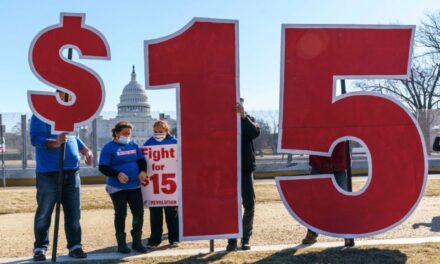By Lamart R. Smith
When people ask for my golden rules of managing diabetes, they aren’t surprised by the first items on my list—listen to your physician, exercise regularly, watch what you eat and pay attention to food labeling. But when I get to my final item, have fun, I typically get a quizzical look. Don’t get me wrong, managing diabetes successfully takes work. But I’ve come to learn that living your life and having fun should be—and needs to be—part of that effort.
The journey that has brought me to these realizations started when my primary care physician told me about the Diabetes Self-Management Training opportunity at Johns Hopkins Medicine. The training course is part of a larger initiative called “Healthier 2gether” that is run by Johns Hopkins Medicine and University of Maryland Medical Center. It offers a program for people living with diabetes, like me, as well as the Diabetes Prevention Program for at-risk individuals.
When I learned of the program, I had an A1C level of 7.0, which put me right at the threshold of having diabetes. My doctor and I discussed that being at the threshold meant I could turn things around. When she asked if I wanted to learn more about getting support for this through Johns Hopkins, I gave her a resounding “Yes!”
There were a few reasons for my enthusiastic response. First, the impact of diabetes in the Black community is more pronounced than in other populations. For example, in the U.S. in 2018, Black adults were 60 percent more likely to be diagnosed with diabetes—and twice as likely to die from the disease. Secondly, my family history indicated I could use all the help I could get! My father, mother, sister and brother all had diabetes to varying degrees. On the extreme side, my sister’s decline in health, which eventually led to her passing, started with diabetes. On the more positive side, my brother was able to turn things around, just like I am. As my family’s experience shows, diabetes is a disease that must be taken seriously—but it’s also important to always have hope!
Thirdly, I knew that managing my glucose levels meant changing my diet and exercising more. But I lacked the understanding, tools and methods to do this—and to implement changes that fit my lifestyle needs. So my doctor referred me to enroll in the Diabetes Self-Management Training, where I met Diane Pabon, my diabetes educator. And the rest, as they say, is a wonderful history for me and my diabetes!
In our very first session, I could see that Diane understood how to manage diabetes. But she also wanted to understand me. We worked together to determine actions I could take that also fit into my work schedule, family responsibilities and lifestyle. When Diane learned that my wife and I ate out most nights, we developed a plan around that. Now, when I eat out, I know how to control portion sizes, and I take half my meal home for lunch the next day. We’re also working on healthy ways to cook and eat at home a couple nights a week. Diane taught me how to read food labels so that I can shop and snack appropriately. And when she learned that chocolate was my “kryptonite,” she recommended some sugar-free varieties and offered tips for enjoying the “real thing” in moderation. In fact, with Diana’s inspiration, I developed a solution on my own—sharing a chocolate cupcake with my granddaughter instead of each of us having a whole one. We always laugh when she gets the bigger half. The lesson here is that taking care of myself has actually enriched my time with my granddaughter.
Diane also suggested I get my exercise in during the workday instead of waiting until I get home, when I’m tired and less likely to do it. This has worked wonders! I’ve also come to understand that some things I love—like getting outside, playing with my grandchildren and having quality time with my family—can be fun and support my diabetes management.

I’ve been in the program less than 12 months, but I can’t imagine my life without Diane. She’s professional and inspirational. She helped me see the damage I was doing through poor diet and lack of exercise‚ and she makes me want to do better. All this brings me to my final rule for success in managing diabetes: Seek and accept the support that exists. Diane and the Healthier 2gether program have changed my life. Physically, my A1C went from 7.0 to 6.5 after a few months with Diane. I feel better overall and don’t tire as quickly as I used to, and I sleep better. Emotionally, I feel in control. I feel like a person of accomplishment!
If you or a loved one is living with diabetes, I encourage you—in recognition of National Diabetes Month this November—to consider Healthier 2gether. Be inspired by my story. But most importantly, be inspired by knowing you, too, can manage your diabetes and enjoy your life.
The post Healthier together: Remembering to have fun when managing your diabetes appeared first on AFRO American Newspapers .











